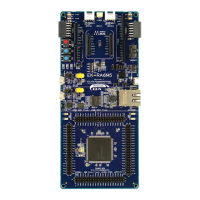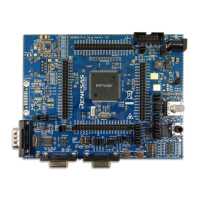of 42
May 10, 2017
4.2 Transmit Abort Function
By prohibiting the use of the transmit queue, messages in the transmit queue can be aborted. Transmit queue abort
will abort all messages in the transmit queue, not just the message being transmitted (the transmit queue will be empty
(the TXQEMP flag in the TXQSTSm register will be "1")). You can complete the abort of the transmit queue by
checking the availability of the transmit queue.
No interrupt is generated when the transmit abort of the transmit queue is completed. However, if aborted during
transmission, a transmit queue completion interrupt may occur due to transmission completion. For details, refer to
"Figure 2-3 Application Example of Transmit Abort Function ".
4.3 Transmit Queue Interrupt Processing
4.3.1 Transmit Queue Interrupt Processing
If the transmit queue interrupt is enabled, a CANm transmit-related interrupt is generated when the condition selected
in the TXQIM bit setting of the TXQCCm register is satisfied. The transmit queue interrupt can be enabled or disabled
for each transmit queue using the TXQIE bit of the TXQCCm register.
CANm transmission-related interrupts share the following sources. When using multiple interrupt sources, determine
the sources within the interrupt as necessary.
The sources of CANm transmission-related interrupts can also be confirmed in the GTINTSTS0 register.
・CANm transmission completion interrupt
・CANm transmit abort interrupt
・CANm transmit/receive FIFO transmission completion interrupt
・CANm transmit queue interrupt
・CANm transmit history interrupt
Even if the use of the transmit queue is prohibited (the TXQE bit is "0") while an interrupt request is generated (the
TXQIF flag of the TXQSTSm register is "1"), the TXQIF flag is not automatically set to "0". Set the interrupt request
flag to "0" with the program.
The sources of the transmit queue interrupt are shown below.
・Transmit queue interrupt request occurs when the transmit queue becomes empty due to transmission completion
・A transmit queue interrupt request is generated each time one message is sent.

